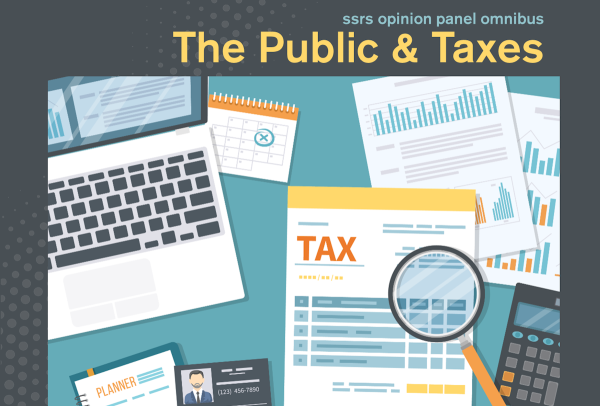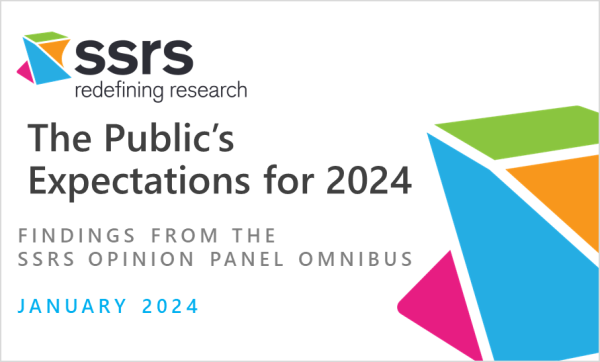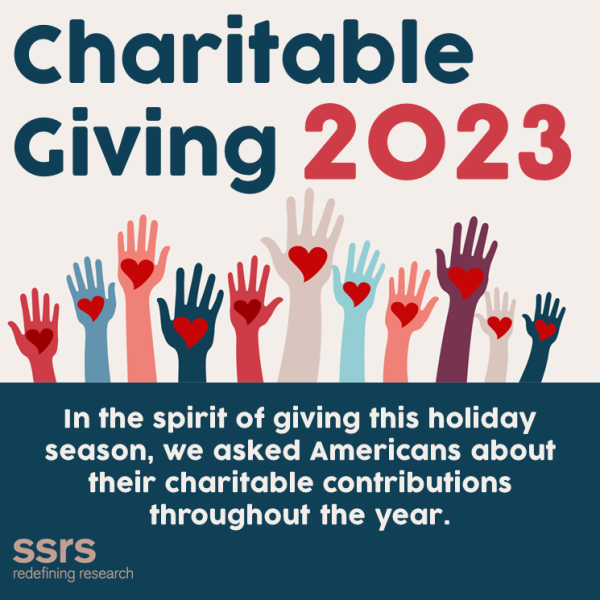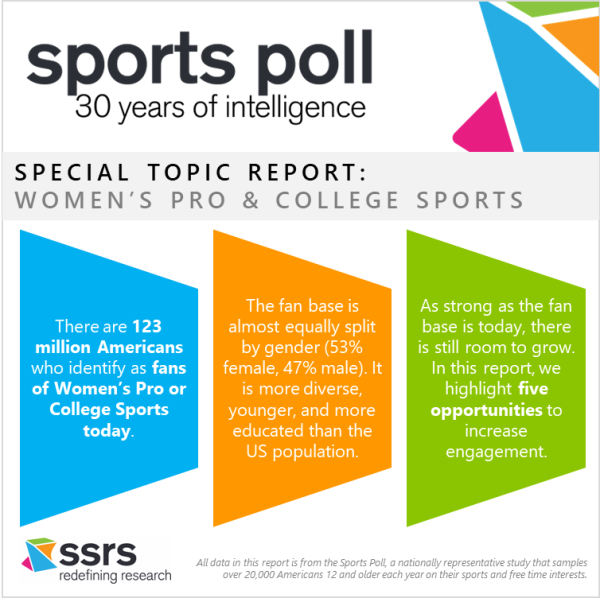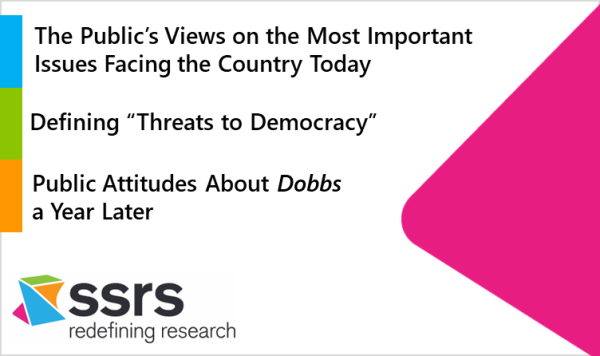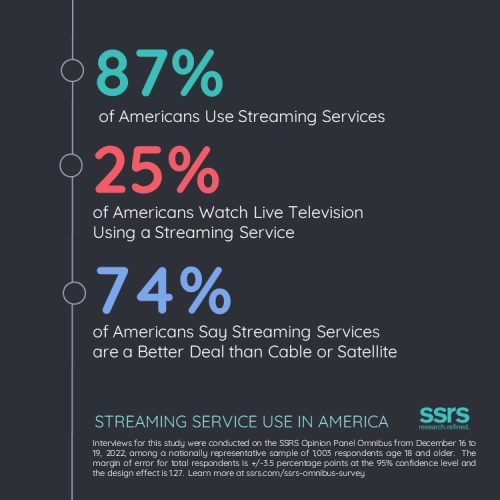New research from SSRS finds that 37% of U.S. adults have used an online dating site or app at some time in their lives, and that 7% are currently using an online dating site or app.
- More than half of adults aged 18-29 (56%) have used online dating sites or apps, and this youngest group of adults is also the most likely to be current users (13%).
- Nearly half of adults aged 30-49 (47%) have used such a site or app at some time in their lives.
These findings are part of an SSRS Opinion Panel Omnibus poll conducted January 5–7 and 19-21, 2024, among a nationally representative sample of 2,011 adults aged 18 and older.
The Public’s Use of Online Dating Sites or Apps
Demographically, current users of online dating sites or apps are more likely to be men than women (56% to 39%). In addition, 37% of current users are aged 18-29 and 38% are aged 30-49; 19% are aged 50-64 and only 6% are aged 65 or over.
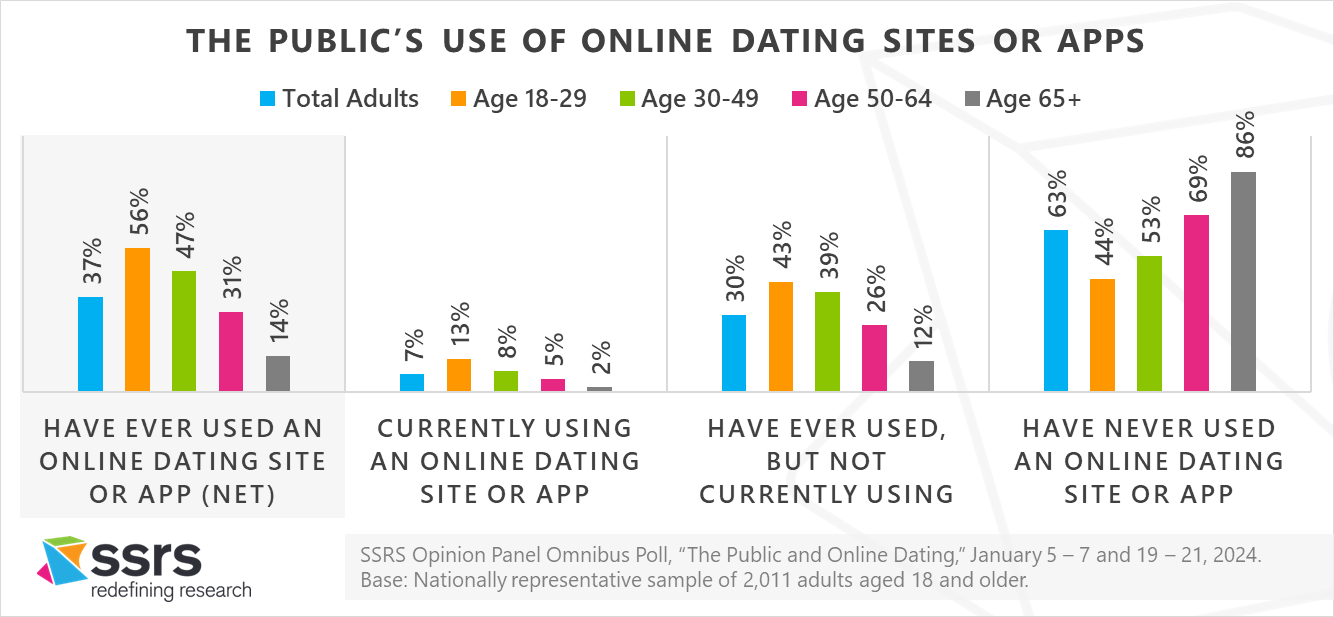
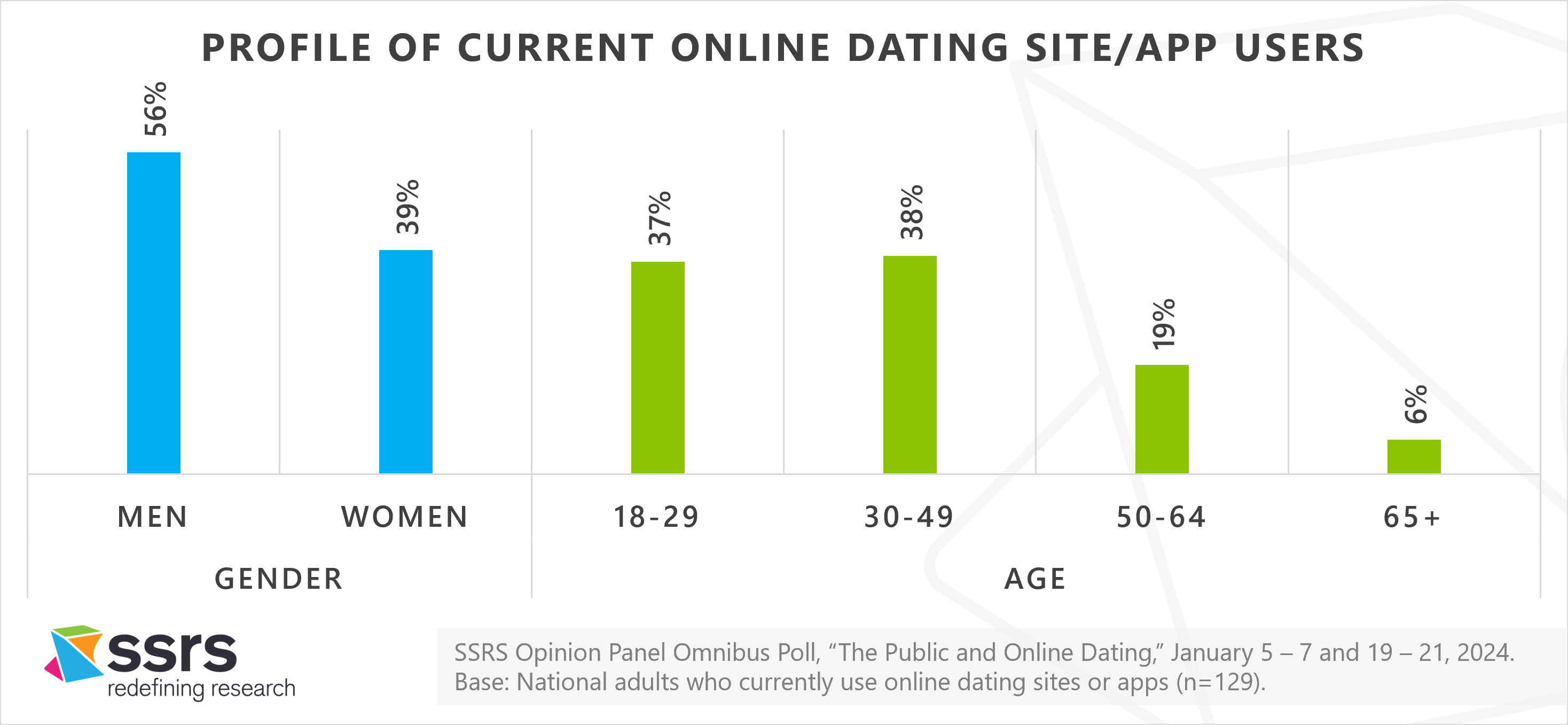
Online Dating and Safety
A majority of adults nationally believe that meeting someone in person who you met on a dating site or app is generally safe (61%), although this includes only 5% who think it is very safe. Nearly four in ten (39%) think it not too or not at all safe. Women are significantly more likely than men (48% to 30%) to believe it is not too/not at all safe.
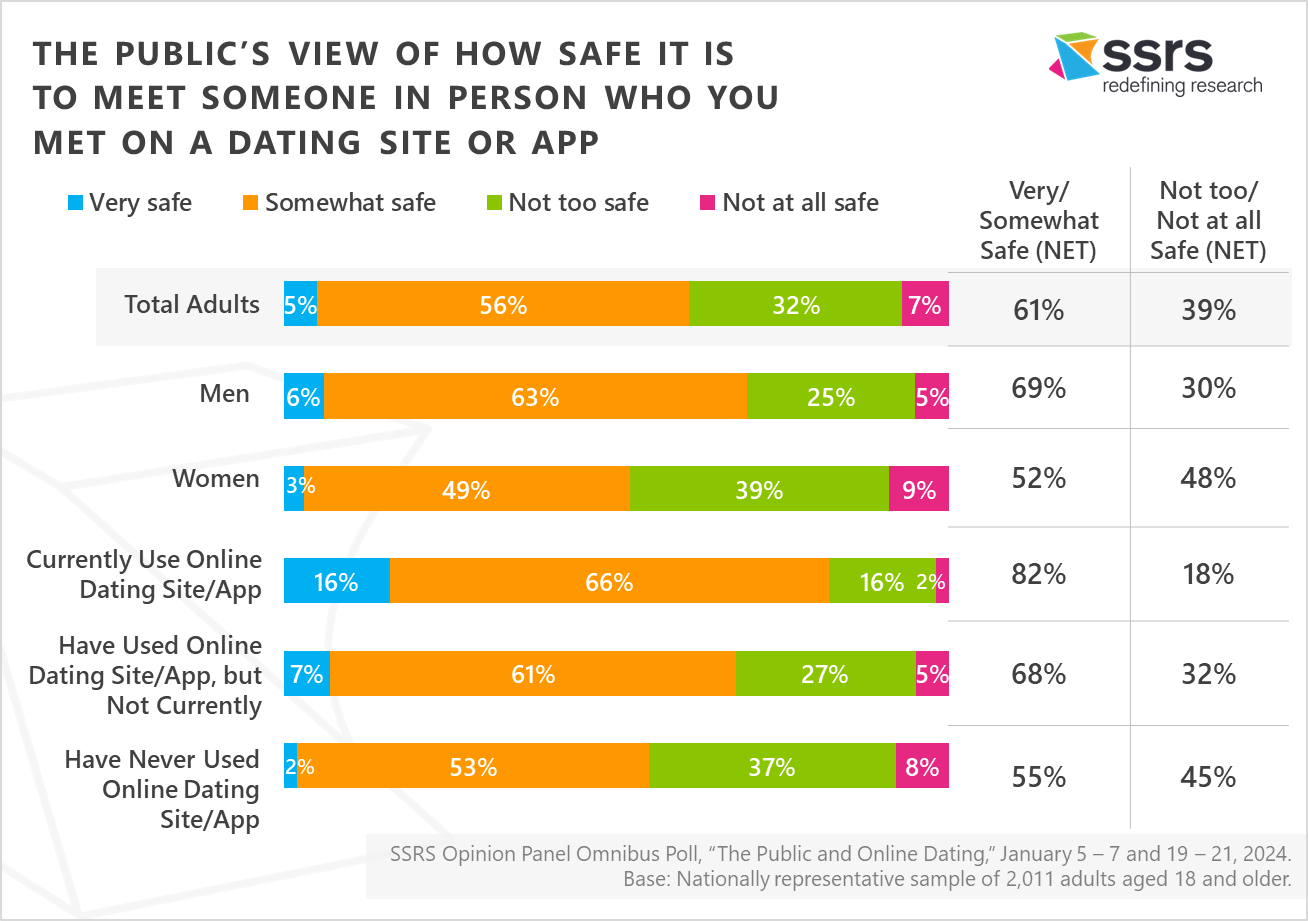
Nearly half of adults who have never used a dating site or app (45%) believe it is not too or not at all safe, a view shared by only 18% of those who currently use a dating site/app and 32% of those who have ever used a dating site/app but do not use one currently.
Success of Relationships that Began Online
A majority of adults nationally believe that relationships that begin on dating sites or apps are just as successful as those that begin with people who meet in person (61%). About one-third (34%) believe they are generally less successful and 4% that they are more successful. Those who have never used an online dating site or app are more likely than those who have used one to believe that relationships that begin on dating sites or apps are generally less successful (39%), but even among this group, 57% believe they are just as successful.
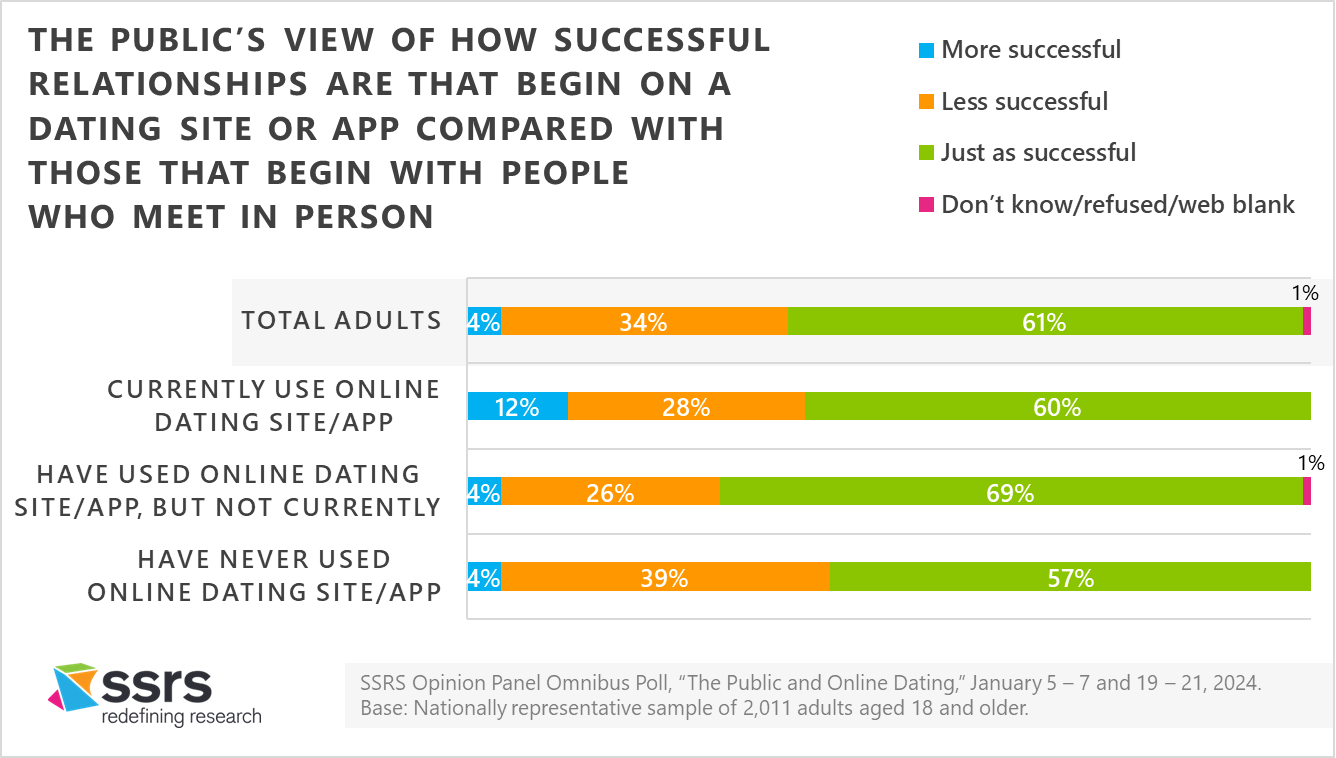
Online Dating Experience
Those who have used an online dating site or app were divided in their assessment of the experience. About four in ten (41%) said the experience has been positive, 32% said it has been negative, and 27% neither positive nor negative. Among dating site/app users, men and women give similar assessments of their experience.
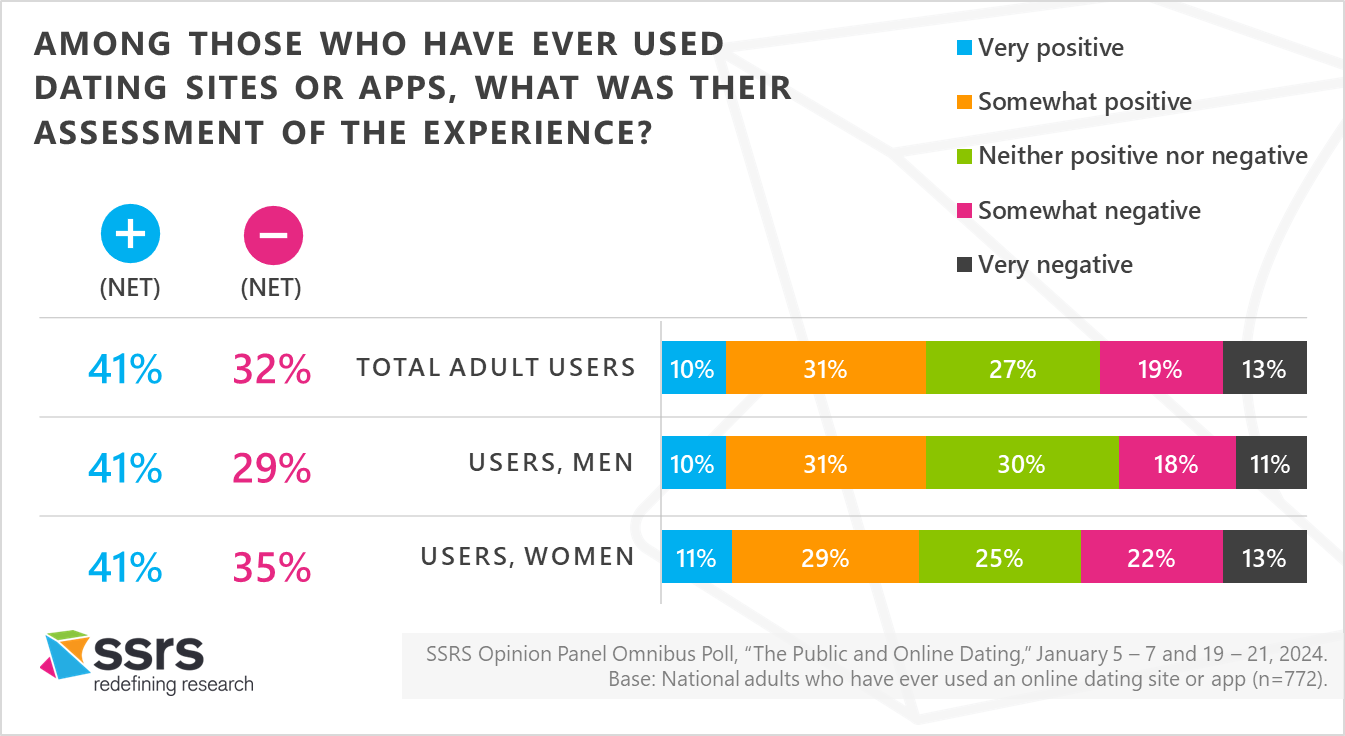
Type of Relationship Sought with Online Dating
Among those who have used an online dating site or app, 39% say that in general they were looking for a relationship that was both serious and casual; 41% were looking were generally looking for a serious relationship (only), while 20% were looking for a casual relationship (only). Users aged 18-29 (32%) are less likely than those aged 30 or over to say they were generally looking only for a serious relationship. Among users, women were more likely than men to be looking only for a serious relationship (46% to 36%) and less likely to say they were looking for both a serious and a casual relationship (32% to 47%).
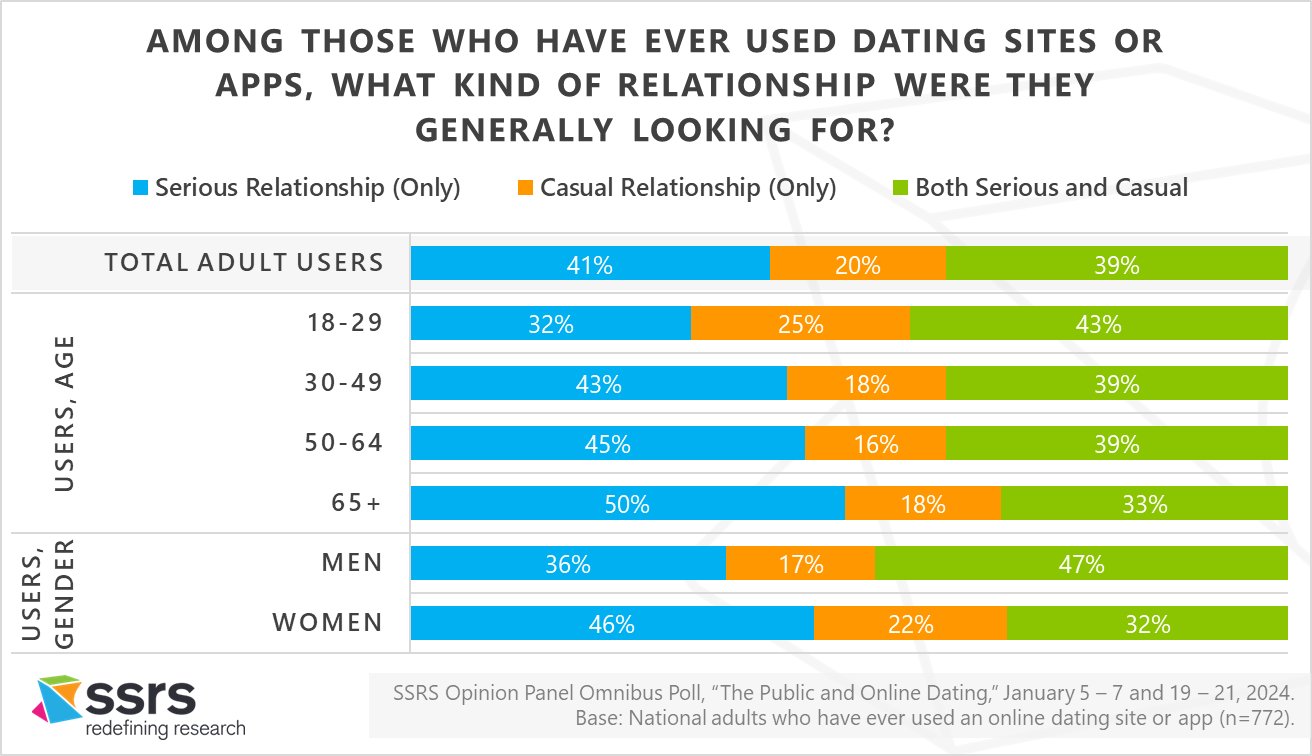
More than four in ten (42%) of adults who have ever used an online dating site or app report that they have at some time been in a committed relationship with someone they met through such a dating site/app. Nearly half (47%) of 30- to 49-year-old users report such an experience.
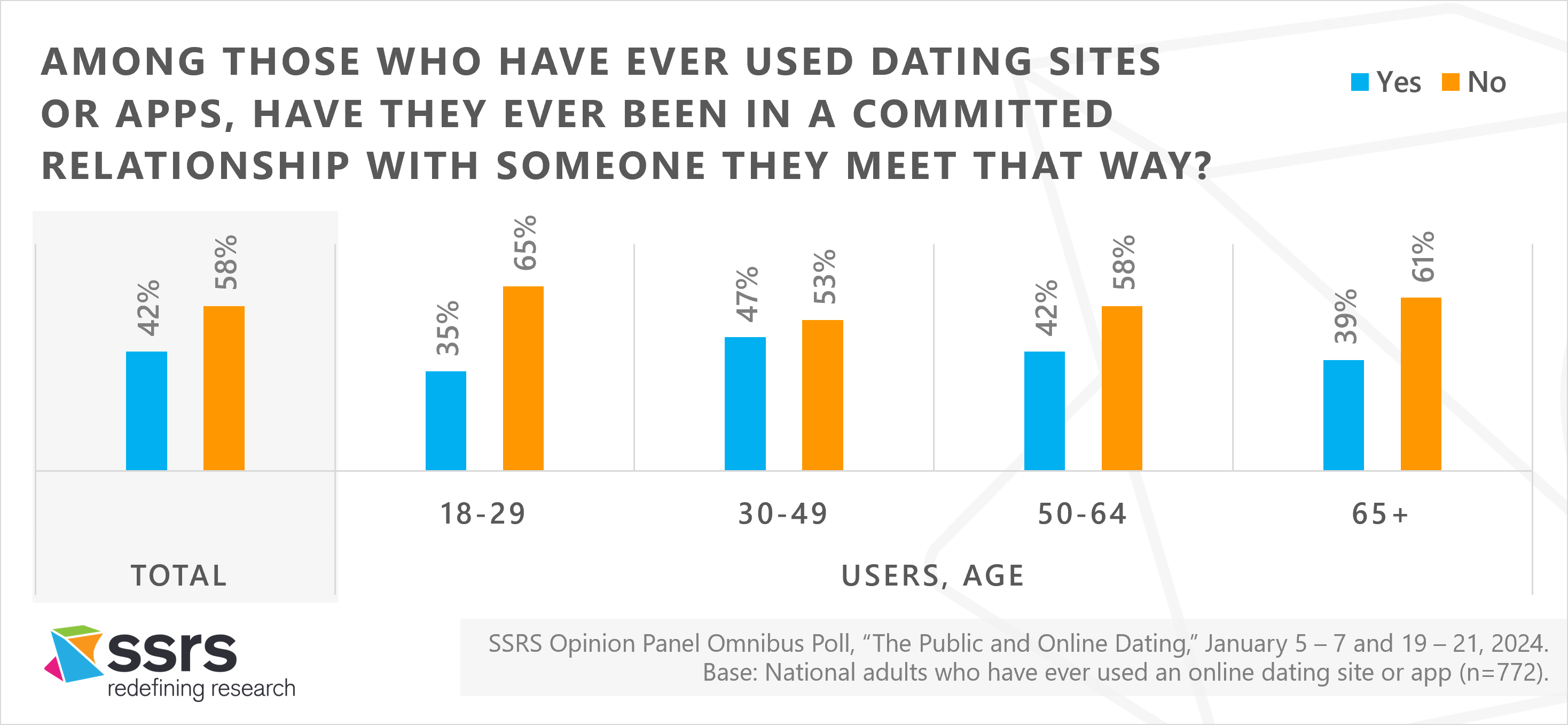
Online Dating Site or App Used
Among those who have ever used an online dating site or app, 46% say they have used Tinder, making it the most-often used of a list of sites/apps, followed by Plenty of Fish (33%), Match (29%) Bumble (26%), and eHarmony (22%).
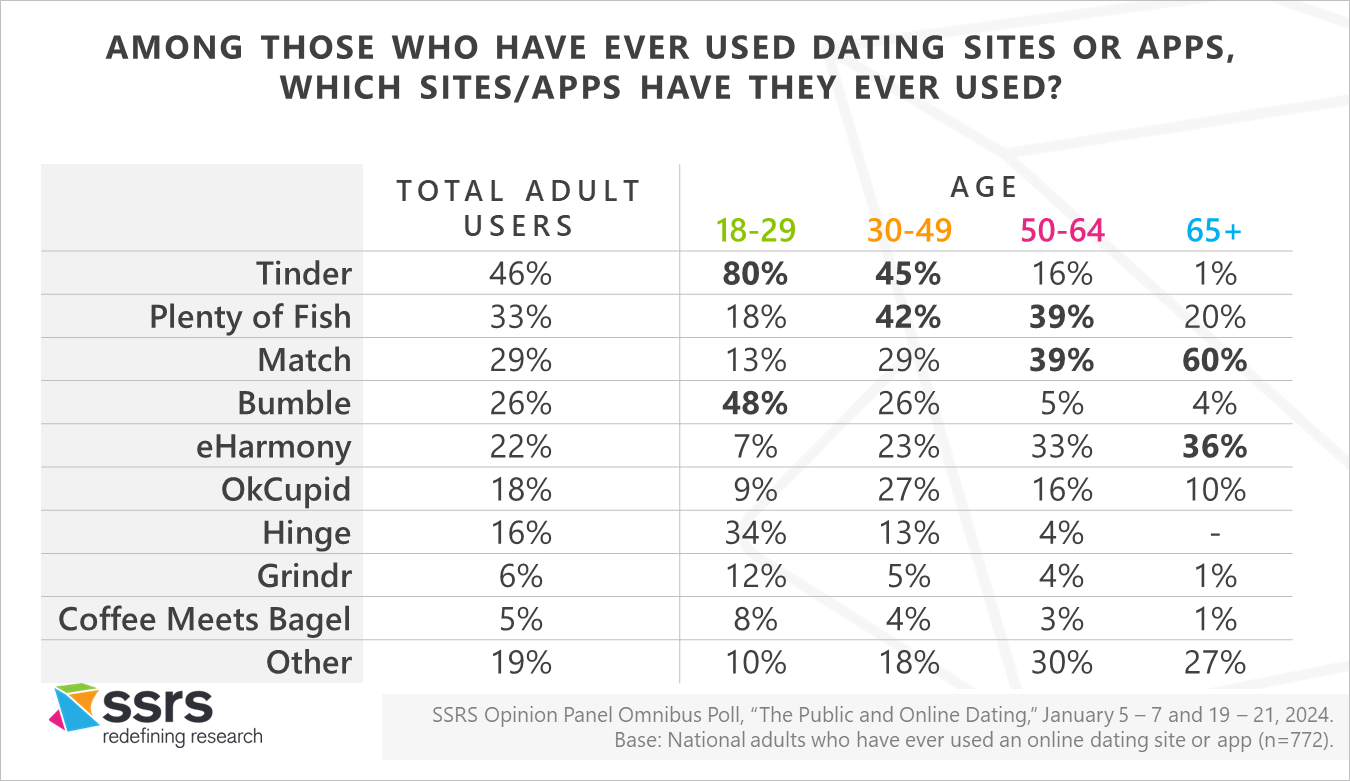
The most-used dating sites/apps vary by the age of users. Among 18-29-year-olds who have ever used dating sites/apps, Tinder (80%) and Bumble (48%) are the top two sites/apps used. Among 30–49-year-old users, Tinder (45%) and Plenty of Fish (42%) are nearly tied atop the list; among 50-64-year-old users, Plenty of Fish and Match (both 39%) are tied for first; and among users age 65 or over, Match (60%) and eHarmony (36%) are the top two.
Methodology
These findings are part of an SSRS Opinion Panel Omnibus poll conducted January 5–7, and 19-21, 2024, among a nationally representative sample of 2,011 adults aged 18 and older, asking about their online dating or app usage. The questionnaire was developed and the data analyzed by SSRS contributor, John M. Benson, with assistance from the SSRS team.

John M. Benson is a public opinion researcher, academic writer, and editor with over thirty years’ experience examining public attitudes about health policy and other domestic policy issues. He has directed numerous national and international polling projects leading to more than 100 publications in New England Journal of Medicine, Health Affairs, JAMA, Public Opinion Quarterly, Emerging Infectious Diseases, Public Health Reports, Milbank Quarterly, Social Science Research, and other domestic policy and polling journals. He is also co-author of American Public Opinion and Health Care (CQ Press).
The SSRS Opinion Panel Omnibus is a national, twice-per-month, probability-based survey. Data collection was conducted from January 5–7 and 19-21, 2024, among a sample of 2,011 adults. The margin of error for total respondents is +/- 2.5 percentage points at the 95% confidence level. The design effect is 1.34. All SSRS Opinion Panel Omnibus data are weighted to represent the target population of U.S. adults ages 18 or older. View the questions used for this analysis, along with the responses (topline).
The SSRS Opinion Panel Omnibus is conducted on the SSRS Opinion Panel. SSRS Opinion Panel members are recruited randomly based on a nationally representative ABS (Address Based Sample) design (including Hawaii and Alaska). ABS respondents are randomly sampled by Marketing Systems Group (MSG) through the U.S. Postal Service’s Computerized Delivery Sequence File (CDS), a regularly updated listing of all known addresses in the U.S. For the SSRS Opinion Panel, known business addresses are excluded from the sample frame.
The SSRS Opinion Panel is a multi-mode panel (web and phone). Most panelists take self-administered web surveys; however, the option to take surveys conducted by a live telephone interviewer is available to those who do not use the internet as well as those who use the internet but are reluctant to take surveys online. All sample drawn for this study were SSRS Opinion Panelists who are U.S. adults ages 18 or older. Sample was selected to ensure representation by age, gender, race and ethnicity, education, Census region, and party identification. Possible sources of non-sampling error include non-response bias, as well as question wording and ordering effects.
About SSRS
SSRS is breaking the mold on what research companies can do. A full-service market and survey research firm, we use the latest data collection best practices and apply cutting-edge survey methodologies backed by insight from our industry-leading team. We have genuine enthusiasm for our work and a shared goal to connect people through research. Our solutions include groundbreaking approaches fit for purpose: the SSRS Opinion Panel, Encipher, SSRS Virtual Insights, the SSRS Text Message panel, and more. Our research areas focus on Health Care and Health Policy, Public Opinion and Policy, Political and Election Polling, Consumer and Lifestyle, and Sports and Entertainment.



